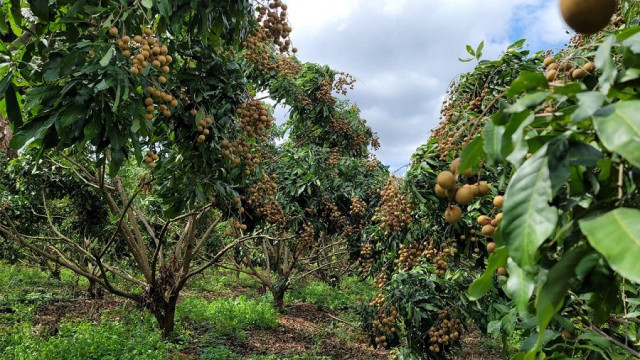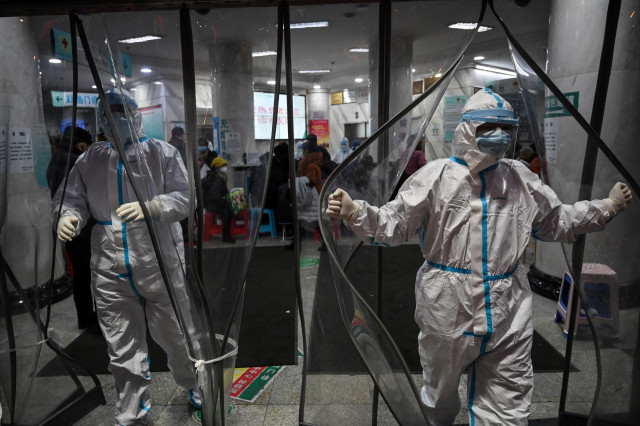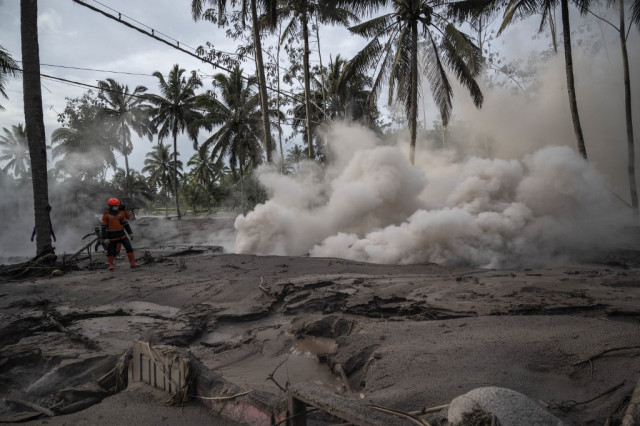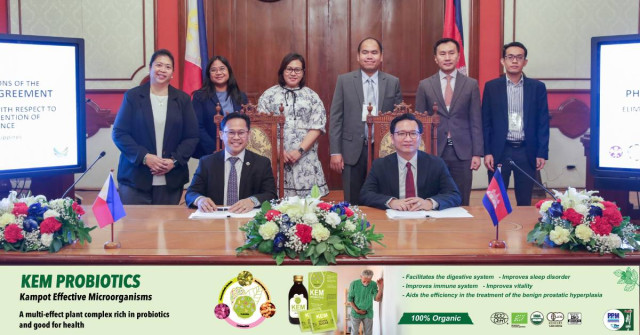Pailin Longan Ready for China

- By Kheav Moro Kort
- March 30, 2022 4:23 PM
Farmers raise standards for export
PHNOM PENH – Cambodia’s longan producers are poised to export to China after extensive training on farming standards and a long delay due to the COVID-19 crisis.
The Agriculture Ministry has told owners of plantations, packing factories and the Pailin Mien community to apply for registration of Pailin longan for the Chinese market.
Ngin Chhay, director-general of the General Department of Agriculture, said Cambodia would be able to export Pailin longan to China in two months at the latest.
Sreng Sreang, a member of the Pailin Longan Farmers’ Community (PLFC), said he had already prepared his seven and a half hectares of the plantation as he was well aware of the news.
He said application for registration is the obligation of the warehouse, the investors or the company, not the fruit growers.
“Farmers have only one role in that process,” he said. “He or she must have been trained on Good Agricultural Practices (GAP), possess that GAP certificate, and have a certificate of his/her field code that is registered as a field of GAP.”
Long Ron, who has six hectares of longan fields, said she has held her GAP certificate for her plantations since 2020.
Most longan farmers and members of the PLFC have been trained in good agricultural practices according to medical standards, some of which have also registered GAP from the ministry.
A GAP certificate can be a useful tool for producers and traders to export longans to international markets, for instance, Thailand and China.
Sreang said each seven-month season yields 30-40 tonnes. He had only one season a year and he had to apply fertilizers, pesticides and supply water. He does not use all his land and could cultivate around 60-70 tonnes a year.
“Challenges still remain. The China market is not in place yet despite the news that the Royal Government of Cambodia and China have signed an agreement. It is not yet 100% legal and put into place. As for the local market price, it is still not up.”
“The price middlemen pay has fallen from 1,200 to 500 riel per kilogram, fortunately in February it increased to 1,500 to 2,000 riel but the price still fluctuates significantly for the local market.”
Cambodians eat small amounts of longan compared with China where it is a popular treat and commonly used as an offering at religious ceremonies. Chinese companies may be more advanced with the technologies in packing and maintaining the quality of fruit, so they buy fruit at a reasonable price and were unlikely to drop the price, Sreang said.
Another challenge is that the farmers or growers must spend a lot on investment, especially in fertilizers, pesticides and water. The profit is out of balance with the costs. These problems disappoint farmers and lead them into a debt trap.
Long Ron’s challenge is that she can only use half her land because of insufficient water from irrigation. Only 100-200 plants are grown at a time. If all her land was used, it would yield not less than 80 tonnes.
Sreang expected that he and the other farmers would be paid a reasonable price for their longans. “The price should be around 3,000 to 4,000 riel per kilogram, not less than a dollar but around that,” he says.
Seng Sreang and Long Ron urged the government and stakeholders to pay more attention to water resources and the irrigation system. They believe that with concrete irrigation systems and sufficient water farmers will prosper.
Pailin is well-known for its agricultural products, specifically longan fruit – Pailin longan, besides maize and cassava. In addition to Pailin, commercial longan plantations also take place in Battambang and Banteay Meanchey.















